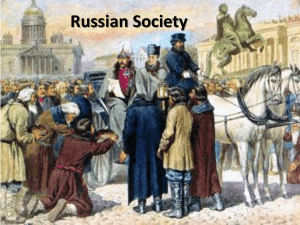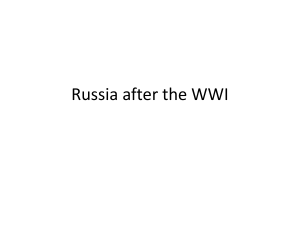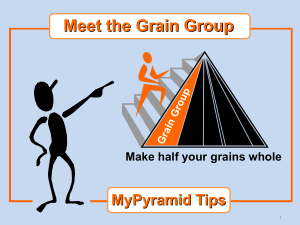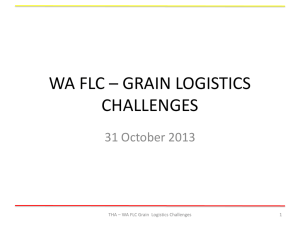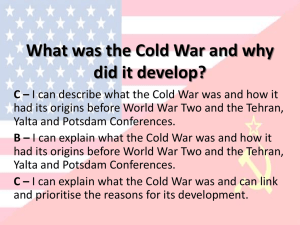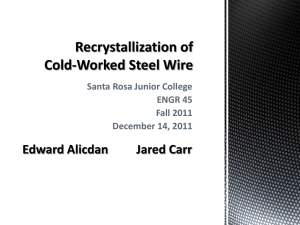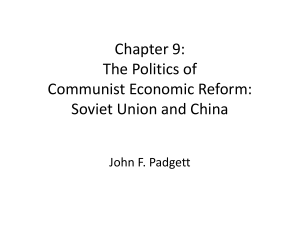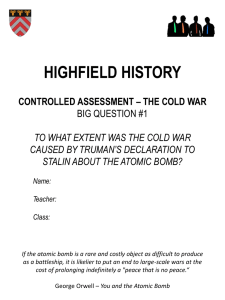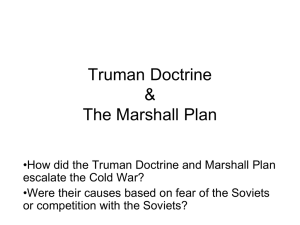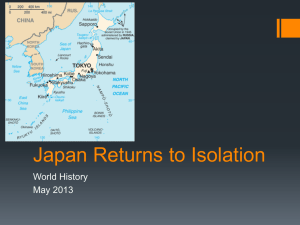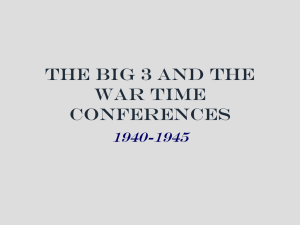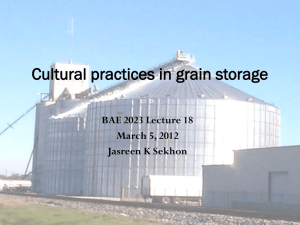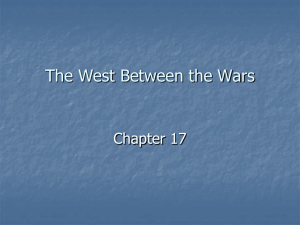Lesson 1a * The Great Turn
advertisement
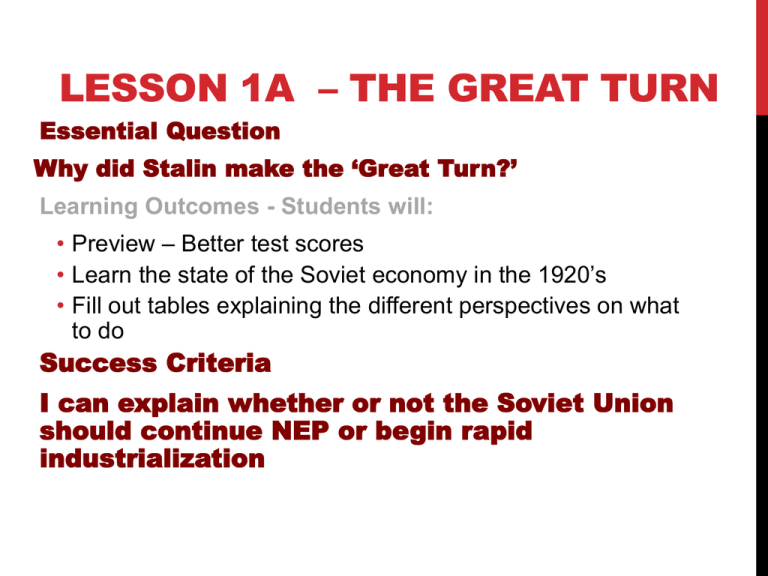
LESSON 1A – THE GREAT TURN Essential Question Why did Stalin make the ‘Great Turn?’ Learning Outcomes - Students will: • Preview – Better test scores • Learn the state of the Soviet economy in the 1920’s • Fill out tables explaining the different perspectives on what to do Success Criteria I can explain whether or not the Soviet Union should continue NEP or begin rapid industrialization PREVIEW Let’s pretend you wanted to get better test scores out of students. • You do not know what is on the test and cannot steal it. What some possible ways you could do this? • You can do anything you want. ANYTHING!!! You have no rules. • All we care about is results VOCAB NEP Kulak Success Criteria I can explain whether or not the Soviet Union should continue NEP or begin rapid industrialization MARXIST-BOLSHEVIK THOUGHT All Soviet leaders wanted to transform Russia, build a communist state and that to do this, Russia needs to industrialize Marxism – the economic system creates the political system Bolsheviks – the political system can create/impact the economic system • All agreed this, the only difference was how THE RUSSIAN MaCONTEXT rx predicted revolution in an industrial state, like Germany and Britain, but Russia was one of the least industrialized states To industrialize a country, you need to spend money on factories, equipment to produce goods (capital investment) • Usually gained from foreign countries • USSR was isolated and didn’t have the money to buy these The only source of wealth was agriculture • Surplus grain could be exported • The peasants would also have to grow extra grain in order to feed a growing industrial workforce • Therefore, everything relied on the peasants NEP 1926 Party Congress – ‘transform our country from an agrarian into an industrial one, capable by its own efforts of producing the necessary means’ • Industrial capacity had reached pre-1914 levels and a massive injection of funds and capital was needed • Grain supply did increase, but not enough for its industrialization plan • 1913- exported 12 million tons grain • Best NEP year – 3 million • 1926-7 – exports 33% and imports 38% of 1913 levels NEP = New economic policy introduced by Lenin in 1921. It allowed private trade and business (capitalism) in order to encourage economic growth although the State still controlled heavy industry, transport and banking. NEP AND THE PEASANTS NEP Grain Gov’tdidn’t tried to reach encourage the market a new because: tactic to sell more grain collecting taxes 1.Stopped Agriculture was still veryfrom backward peasants form ofwooden grain and • 1927in–the 5 million madeploughs them pay a money were still in tax use Banned private traders who paid 2. Peasant landholding actually more for grain thanafter the gov’t became smaller the 1917 Peasants had to sell at lower prices Revolution to the state and had estates to sell more • Large efficient and grain farms than before to pay their and taxes had disappeared Meat been pricesdivided rose soupthe peasants fed to animals and sold theand 3.their Thegrain relationship between gov’t animals + held grain back peasants deteriorated byhoping the endthe of price the would 1920s go up Result of all this? The grain procured by the state in 1927 was ¾ of what was procured in 1926. This slowed down industrialisation as their was less grain to export to pay for foreign machinery. Something had to be done. Bureaucrat Why is more grain needed and why isn’t it reaching the markets? More grain is needed in order to export abroad to make foreign currency which is used to pay for foreign technology and machines in order to industrialise. Grain isn’t reaching markets because: a) farming is inefficient and doesn’t produce enough b) the revolution destroyed old, efficient farms c) peasants are holding onto grain Governmen How would t Official you persuade more peasants to get more grain to market? Use propaganda to persuade peasants to sell more grain Peasant Hide grain, feed grain to animals and then sell them, sell on black market How and why would you avoid sending more grain to the markets? Raise the price of grain at market? Threaten/force peasants to sell more grain? Why? Government doesn’t pay as high enough for grain, if we hold onto grain, they will be forced to raise price NEP AND STALIN Stalin sent out officials to seize grain • Jan 1928 – went into the Urals and Western Siberia on a requisitioning campaign • Encouraged poor peasants to denounce kulaks (rich peasants) who were ‘hoarding grain’ • Resulted in more grain, but a complete destruction of peasant-gov’t relationship NEP AND THE WORKERS 1928 – wages reach pre-1914 levels, did not have an 8-hour day, high unemployment throughout NEP, high food prices, women forced out of jobs because of returning Civil War soldiers, large number of homeless, most workers lived in overcrowded, poor-quality homes, parentless children joining gangs (result of Civil War) 2 POLICIES POLICY 1 – BUKHARIN & THE RIGHT Accepted that industrialization was the main goal, but wanted to cooperate with the peasantry Believed trying to force the peasants to supply more grain might lead to the collapse of the USSR and the end of the revolution The right was prepared to take more time to achieve collectivization and was not keen on seizing grain POLICY 2 – TROTSKY & LEFT-WING Believed the peasantry had to be exploited through taxation and prices so that the wealth they generated could be transferred to industrial investment If gov’t bought cheap grain and sold for high prices, surplus could be pumped into industry Industrial development could only be funded at expense of peasants Success Criteria I can explain whether or not the Soviet Union should continue NEP or begin rapid industrialization WHAT TO DO? Policy 1 – Carry on with the NEP Increasing the price of grain will encourage peasants to sell food to government. This will give peasants more money to spend on better equipment like tractors to produce even more food. Using force will anger peasants who might hid more grain. Collectivisation provides no incentive for peasants to work hard Poor peasants means inefficient farming Policy 2 – Rapid industrialisation Rapid industrialisation is needed to defend Russia. Forced industrialisation is quick and collectives means we can monitor peasants better. NEP allows peasants to remain as landowners – not communism! Russia is too backward – it will take to long to industrialise unless something is done soon Russia doesn’t have time to industrialise naturally – too many enemies! WRAP UP Can we answer our question? Why did Stalin make the ‘Great Turn?’ With your partner, discuss possible answers • What was the state of the Soviet economy in the 1920’s? • What different paths could the politburo taken? • What would you have done? LESSON 1B – THE GREAT TURN Essential Question Why did Stalin make the ‘Great Turn?’ Learning Outcomes - Students will: • Preview – What if? • Learn about the Great Turn and why it occurred • Discuss the significance of this Great Turn Success Criteria I can analyze primary and secondary sources to explain why Stalin made the Great Turn PREVIEW What was the most important decision/event of your life? Why? • Ex. Moving from a different area? • Ex. The day you broke your arm? Look back at the events leading to that? What could you have done differently? • Ex. You broke your arm playing soccer, but you didn’t feel well that day and were thinking about not playing What if you made another choice. How would that have changed your life? VOCAB 5-Year Plan Collectivization NEPman Great Turn Command Economy Success Criteria I can analyze primary and secondary sources to explain why Stalin made the Great Turn STALIN’S ECONOMIC AMBITIONS Industrialize and Modernize • There were practical and ideological reasons for wanting this 1. Increase military strength Increase grain supplies 5.3.Establish his credentials • Non-industrialized = weak (Crimean War) of as the economy Needed todependence prove himself the successor •End Warthe scare during the 1920s, thus on the backward system and equal toagricultural Lenin convincing Stalin that the USSR would be attacked (He(1928), was proved correct) During famine bad harvest Economic transformation would takeorthe discontent, the stateatindustrial was thebase revolution forward with Stalin the at centre of •peasant Needed a well-developed nd revolution mercy of the peasantry this to2manufacture weapons for defense • Poland had a new anti-communist dictator Move a socialistofsociety 6.4.To improve thenewspapers standard livingmore hstule andtowards British grew Industrialization 1928 – 20% of created population werefor workers Achieve self-sufficiency 2. wealth society had to industrialize in order toWestern achieve The communist life be the on good life •USSR Make USSR lessshould dependent socialism and communism and peopleespecially in other parts of the world should goods, for industrial production appreciate it had to offer working • Producewhat the goods the people needed people 4. REASONS FOR THE GREAT TURN 1. Increase military strength – factories were needed for this 2. Achieve self-sufficiency – resulting in long-term security for communism in a hostile world 3. Increase grain supplies – necessary to pay for industrialisation 4. Achieving Socialism – rapid industrialisation and collectivisation will help socialise people into good communists 5. Establish his credentials – his credibility as leader rested on his promise to ‘build socialism in one country’. Stalin needed the modernise Russia in order to secure his own hold on power. 6. Standards of Living – this needed to improve in order to improve for Stalin to gain support amongst people, and to help spread communism abroad Dec 1927 – 15th Party Congress THE GREAT TURN • Announcement of the first 5-Year Plan • demanded rapid industrialization, setting high targets for industry to achieve • In agriculture, the plan called for collectivization • 15% of peasant households were to be collectivized End of NEP • NEP did recover the Soviet economy, but it was not developing an industrial, urban, proletarian, socialist society • NEP encouraged private markets, private enterprise and NEPMEN • business men who took advantage of a lack of commercial market and traded • Peasants showed no signs of becoming good socialists and couldn’t be relied on to produce grain so the state could industrialize THE GREAT TURN Many party members hated the NEP and warmly welcomed Stalin’s ‘left-turn’ in his policies of modernization and industrialization The Great Turn is the change from NEP to 5Year Plans because it marked a major shift in the economy towards central planning • Command economy • Land was socialized through collectivization • Industrialization would lead to the growth of the proletariat along with new cities and new wealth Some historians claim that this Great Turn is where the USSR ‘went wrong’ • Led to totalitarianism, tyranny and inhumanity Success Criteria With your partner, complete I can analyze primary and the questions on the secondary sources to explain why worksheet provided Stalin made the Great Turn 1 AND 3, ARE THE COMMUNISTS DEFINING THE IDEA OF ‘BUILDING SOCIALISM’? Source 1 defines ‘building socialism’ as ‘industrialisation and economic modernisation’, achieved by building factories and towns. Source 3 describes how Communists saw building socialism as ‘rapid industrialisation and forcible collectivisation of peasant agriculture’. FIND AT LEAST THREE REASONS WHY STALIN WANTED TO TRANSFORM SOVIET SOCIETY. Didn’t want Russia to be ‘beaten’ by other countries Wanted to reform Russia into a modern country by improving military, culture, politics, industry and agriculture. Modernisation of countryside Wanted to compete with capitalism THE SOURCE, WHAT MESSAGE EACH IS CONVEYING ABOUT THE WAY SOVIET SOCIETY IS GOING TO CHANGE. Modernisation through mechanisation – tractor represents the future of farming Modernisation through education – peasants are being educated in latest farming methods THE SOURCE, WHAT MESSAGE EACH IS CONVEYING ABOUT THE WAY SOVIET SOCIETY IS GOING TO CHANGE. Society will become more efficient and productive through better planning and organisation THE SOURCE, WHAT MESSAGE EACH IS CONVEYING ABOUT THE WAY SOVIET SOCIETY IS GOING TO CHANGE. Society will industrialise through the efforts of all workers THE SOURCE, WHAT MESSAGE EACH IS CONVEYING ABOUT THE WAY SOVIET SOCIETY IS GOING TO CHANGE. Society will become more equal – all will work to build socialism WRAP UP Can we answer our question? Why did Stalin make the ‘Great Turn?’ With your partner, discuss possible answers • Why did Stalin seek to industrialize and modernize the Soviet Union? • Do you think he was the only one who wanted this? • What was the Great Turn?
